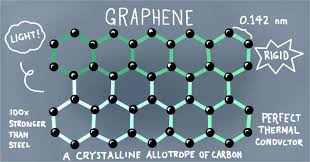
Breaking News
 Imagine All the People: Food, Freedom and What It Means To Be Human
Imagine All the People: Food, Freedom and What It Means To Be Human
 Long-term aspartame intake sabotages brain and heart function
Long-term aspartame intake sabotages brain and heart function
 NonConformist Series: Practical Wealth - Join us virtually Dec 29-30, 2025
NonConformist Series: Practical Wealth - Join us virtually Dec 29-30, 2025
 New bill would allow private citizens to fight cartels: 'WE ARE UNDER ATTACK'
New bill would allow private citizens to fight cartels: 'WE ARE UNDER ATTACK'
Top Tech News
 Perfect Aircrete, Kitchen Ingredients.
Perfect Aircrete, Kitchen Ingredients.
 Futuristic pixel-raising display lets you feel what's onscreen
Futuristic pixel-raising display lets you feel what's onscreen
 Cutting-Edge Facility Generates Pure Water and Hydrogen Fuel from Seawater for Mere Pennies
Cutting-Edge Facility Generates Pure Water and Hydrogen Fuel from Seawater for Mere Pennies
 This tiny dev board is packed with features for ambitious makers
This tiny dev board is packed with features for ambitious makers
 Scientists Discover Gel to Regrow Tooth Enamel
Scientists Discover Gel to Regrow Tooth Enamel
 Vitamin C and Dandelion Root Killing Cancer Cells -- as Former CDC Director Calls for COVID-19...
Vitamin C and Dandelion Root Killing Cancer Cells -- as Former CDC Director Calls for COVID-19...
 Galactic Brain: US firm plans space-based data centers, power grid to challenge China
Galactic Brain: US firm plans space-based data centers, power grid to challenge China
 A microbial cleanup for glyphosate just earned a patent. Here's why that matters
A microbial cleanup for glyphosate just earned a patent. Here's why that matters
 Japan Breaks Internet Speed Record with 5 Million Times Faster Data Transfer
Japan Breaks Internet Speed Record with 5 Million Times Faster Data Transfer
Graphene water filtration system

The platform offers a disruptive solution to water pollution and remediation and is based on years of expertise in graphene solutions work with a keen focus in water filtration. The material has been developed as a loose granular adsorbent that can be integrated into existing filtration systems and can be tailored to remove numerous types of contaminants in water. The GLC+ material offers a highly versatile and cost-effective bolt-on solution with the material having the ability to be regenerated for numerous uses. GLC views the ease of use and long material lifetime to have exceptionally competitive features as compared to other treatment solutions. The completion of this development extends GLC's comprehensive portfolio of innovative and ecologically-responsible graphene-enhanced product solutions.
Within the platform, heavy metals, arsenic, and selenium are only a few of the solutions which can be effectively managed. GLC has recently completed development of its selenium adsorbent for the treatment of industrial effluents. This involves a proprietary graphene oxide nano-composite material that has been demonstrated to remove both selenite and selenate from water over a pH range of 2-8. The adsorbent can be used in powder or bead form and is 100% effective in the removal of selenium from a variety of water sources.

 Advanced Propulsion Resources Part 1 of 2
Advanced Propulsion Resources Part 1 of 2

